
Mold growth is a definite problem inside homes. Mold exposure can cause illness in certain people, and for that reason, it’s good to know what can kill mold and how to remove it. Many people get confused about what actually kills mold. We can simply wipe visible old away, but that doesn’t kill it. In this article, we will answer some popular questions about how to kill mold.
If I Wipe Away the Visible Mold, Does that Mean It’s Dead?
Wiping away mold is likely the first thing most people want to do. And although this can help remove mold, it doesn’t actually mean that it’s dead. Also, most mold species are pretty delicate and can become airborne when disturbed. This means that as we wipe away the fluffy, delicate mold, we release mold spores and pieces of mold into the air. They can quickly settle elsewhere and begin growing there. Also, mold that has been disturbed is more likely to make it into the respiratory tract, which can cause symptoms of mold illness or mold sensitivity. The best thing to do is hire a mold remediation and cleaning company as they know how to remove mold safely.
 Can I Use Soap and Water on Mold?
Can I Use Soap and Water on Mold?
Many people choose to clean mold with soap and water. While this may remove visible mold on the surface, it doesn’t kill the mold spores. And we discussed above, mold removal can be a bit dangerous for homeowners. However, if the spots are tiny, soap and water can remove the mold. You’ll just need to be careful not to break off spores or small particles of mold that may then circulate in the air. Whatever cloth you use should be discarded after. You’ll also want to wear protective gear like eye cover, gloves, and something to cover your body. This protection stops the particles from getting on your clothes or going into your eyes and mouth. Again, it might be better to consult with a professional mold remediation company.
Will My Air Purifier Kill Mold Spores?
Investing in a good air purifier is always a good idea. Not only do they keep your home fresh, but they can also help eliminate toxic substances like mold spores. Unfortunately, most air purifiers can’t kill mold unless they also have a UV or UV-c light. These are considered the highest quality air purifiers for the simple reason that they can burn up mold spores. UV or UV-c light creates a heat source that can burn up tiny mold spores and thus preventing them from settling on other surfaces in the home.
Will a HEPA Filter Kill Mold?
A HEPA filter is just a type of filter that can be found in various air purifiers. HEPA filters are much more efficient at removing toxic particles in room air. However, a HEPA filter alone can’t kill mold or mold spores. Again, you would need a filter that has a UV or UV-c light included in the product. To kill mold spores, they need to be burned up, and an air filter that has a UV or UV-c light is the only filter that can do that job.
 What Symptoms of Mold Illness do I Need to Watch Out For?
What Symptoms of Mold Illness do I Need to Watch Out For?
Not everyone who is exposed to mold will get sick. Mold illness varies widely based on genetics, current health issues, and sensitivity to the mycotoxins in mold. For those prone to mold illness, symptoms are typically respiratory oriented, although some people get skin rashes, eye problems, severe headaches, and systemic issues. For those who are immunocompromised, mold illness can cause serious problems with various organs, blood disorders, neurological issues, and systemic fungal infections.
Does Bleach Kill Mold?
Bleach has some mold-killing properties for sure. However, bleach can only kill mold on non-porous surfaces. Mold creates a kind of membrane underneath where it attaches to surfaces. Any mold growing on porous surfaces such as wood, particleboard, or drywall will create a membrane and lodge into the material. Unfortunately, bleach can’t do anything about this membrane; the chemical structure is such that bleach can’t penetrate it. Also, by adding more water (as you would when applying bleach), you may end up making the problem worse. Mold on porous material will inevitably grow back, and with added bleach, it has more moisture (from the diluted bleach) with which to thrive.
Does Vinegar Kill Mold?
What most people may not know is that vinegar is actually better at killing surface mold than bleach. Vinegar can get inside of porous materials and kill mold in there. This makes it superior to bleach, and it’s also not as toxic as bleach for the home environment. However, just as we discussed above, it’s important not to add so much water with vinegar as that can add moisture to the area, and spores left behind can grow back again. Even though vinegar is good for killing surface mold, it still isn’t as effective as professional mold remediation.
Are There Any Cleaning Products That Can Kill Mold?
The Homebiotic Surface Cleaner can be used as an effective way to clean mold as it contains citric acid. Used with the Homebiotic Nano Sponge (which wipes away mold, dirt, & grime without cultivating harmful bacteria found in conventional sponges), you’ll clean surfaces naturally without harsh chemicals that damage your home biome.
Following up with the Homebiotic Probiotic Spray introduces good bacteria into your home environment, which helps fight grime before it causes a problem. It’s made with healthy soil bacteria and is 100% safe for your home, family, and pets. No chemicals or worries.
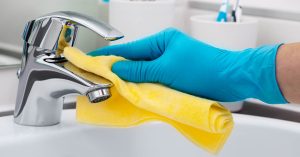
Do You Have to Kill Mold Spores Only?
Mold spores are tiny particles let off by mold. Mold spores float in the air as they find new spaces to drop and grow. It’s imperative to kill all the mold spores when doing mold removal and remediation. It’s also essential to remove all visible mold as well. That’s likely the most accessible part because you can see it with the naked eye. Unfortunately, mold spores are not very visible, so it’s hard to know where they are. A good air purifier with a HEPA filter and UV or UV-c light would be beneficial in this case. These air purifiers can capture mold spores and other small particles that we can’t see, and the UV or UV-c light can kill them.
 How Do I Kill Mold Growing All Over My Basement?
How Do I Kill Mold Growing All Over My Basement?
Many people may wish for a quick solution to a widespread mold problem. Unfortunately, there’s no simple solution for mold growing all over a basement or anywhere else, for that matter. When a mold problem is extensive, it requires professional help to remove it safely. If mold is not handled safely, it can make you very sick, and also, it can quickly spread to other parts of the house. After professional mold remediation, you can buy a good air filter with UV or UV-c light to capture the leftover mold spores. It may also be wise to purchase a dehumidifier to reduce moisture in affected areas.
How Do I Kill the Mildew in my Bathroom?
The good news is that mildew is not as severe as mold. Although mildew is a type of fungus, it doesn’t have the same dangers as the dryer, fluffier kind of mold. Mildew is considered a wet mold, whereas the fluffy type is a dry mold. Dry mold is very fragile and prone to flying around in a room and landing elsewhere. Mildew can be easily removed using Homebiotic Surface Cleaner and Nano Sponge.
Does Bacteria Eat Mold?
The interesting thing about bacteria and mold is that they can either help each other or harm each other, depending on the circumstances. However, bacteria and mold will rarely eat each other. Instead, they compete for space, food, and resources. In some cases, like in cheese-making, bacteria and mold work together to grow and find new spots to settle in. In other cases, mold can secrete things like penicillin that can harm the outside of a bacterial cell wall. This can inhibit the bacteria, but it doesn’t mean that mold is eating bacteria either. Having diverse bacteria and fungus living together actually creates a balanced microbiome and stops any prolific growth by either organism.
 Do Bugs Eat Mold?
Do Bugs Eat Mold?
Many types of microbes live in our homes, and they also share space with insects and other critters. Bugs and critters will eat bacteria and other microscopic substances found in the house. However, bugs and other critters rarely find nutrients through consuming mold. However, bugs and critters also compete with mold for space and food, so they can help maintain a healthy microbiome in the home.
What’s the Best Way to Kill Mold?
As mentioned before, the best way to kill mold or remove mold from the home is to hire a professional mold remediation company. Many of these companies also provide testing to see which microbes are in your home. They can then target their interventions accordingly. Other ways to kill mold are to use vinegar and a small amount of water to clean surface mold and mildew. Purchasing a good air filter with UV or UV-c light is also really helpful. For some small household materials that may have been damaged by mold, sometimes putting these items in the sun for a while can help. The sun naturally contains UV light. However, some mold spores can go dormant and grow back on these items, so special care needs to be taken. Unfortunately, once a mold problem sets in, it’s hard to fix it. For this reason, it’s best to practice preventative strategies to avoid mold growth in the first place.

How to Prevent Mold
The best ways to prevent mold growth in the home are to remove all the things mold needs to grow. Be sure to keep moisture levels to a minimum. This means cleaning and fixing any water damage in the house as soon as it happens. Using dehumidifiers, fans, and open windows will create a constant airflow that helps keep everything dry. Be careful with open windows during cooler months; condensation can form around windows when warm inside but cool outside. Condensation is another thing that can fuel mold growth.
Look into purchasing an excellent air purifier with a HEPA filter and UV or UV-c light. These purifiers can help prevent mold growth but should be used before mold ever has a chance to grow. However, once a mold remediation company has professionally removed mold, an air purifier can be an excellent preventative and maintenance item.
 The other way to prevent mold growth is to take care of your home microbiome. As stated above – bacteria, microbes, and critters all compete for space and food, so the more microbes you have the less mold may be a problem. You can foster a home microbiome by not overcleaning or using harmful cleaners as this will kill the existing microbiome. You can also look into products like Homebiotic Probiotic spray to add more diverse soil-based microbes to the house.
The other way to prevent mold growth is to take care of your home microbiome. As stated above – bacteria, microbes, and critters all compete for space and food, so the more microbes you have the less mold may be a problem. You can foster a home microbiome by not overcleaning or using harmful cleaners as this will kill the existing microbiome. You can also look into products like Homebiotic Probiotic spray to add more diverse soil-based microbes to the house.
In summary
Mold can be difficult to kill once it sets up residence in your home. Unfortunately, mold is a widespread problem in many homes. It’s best to get your home tested and treated by a professional mold remediation company. Products like air purifiers and dehumidifiers can help prevent mold before it becomes a problem. However, you can still use these products after your home has been professionally cleaned. These products will prevent future mold from growing. Be sure to fix and maintain any areas where water comes in or out of the house. This includes faucets, hoses, sinks, showers, and laundry areas. Water leaks and water damage is a prime source of mold growth. Again, if a mold problem is extensive, it’s better to consult a professional because handling mold can make you sick, and it can also help spread mold further in the home.
References
https://escholarship.org/content/qt68c2j665/qt68c2j665.pdf
https://www.npr.org/sections/thesalt/2018/01/29/579747917/the-cheese-does-not-stand-alone-how-fungi-and-bacteria-team-up-for-a-tastier-rin
https://restorationmasterfinder.com/restoration/what-kills-mold-bleach-vs-vinegar/
https://www.nature.com/articles/s41564-019-0593-4.epdf?referrer_access_token=dbirv_c_z112blDos3pXLNRgN0jAjWel9jnR3ZoTv0NvGy2dylkGSz3KfaHrHWvz91WrdbO-hC1L5cRkm8uaNT_206dn91YHLRkkEthiaLvebtJej4odp6x8_o6PN9C4sBMg3aSzRXRoO2YCabzZXpWFXr0v027tEfwr0cTKZlPatZKGOACqFfaEnoF1P92hlljaBbcfjElLCR0Tzp6xVovmC84tkYdJawRACVDgwlT2BCyitwETaNo8a3b7DX_pnzgOL61ZX3_w1lLh07CGR3vnLkR14D6RSH0WRjo9A3WMhTeh8H34VG37MCopLsbAuS5lM85zEgO8dIVUIeQlbA%3D%3D&tracking_referrer=www.npr.org
https://www.wholebodymicrobiome.com/
https://www.euro.who.int/__data/assets/pdf_file/0017/43325/E92645.pdf
https://www.jacionline.org/article/s0091-6749(02)00092-1/fulltext
https://pubmed.ncbi.nlm.nih.gov/15143854/
https://www.sciencedirect.com/science/article/abs/pii/S0013935115000304
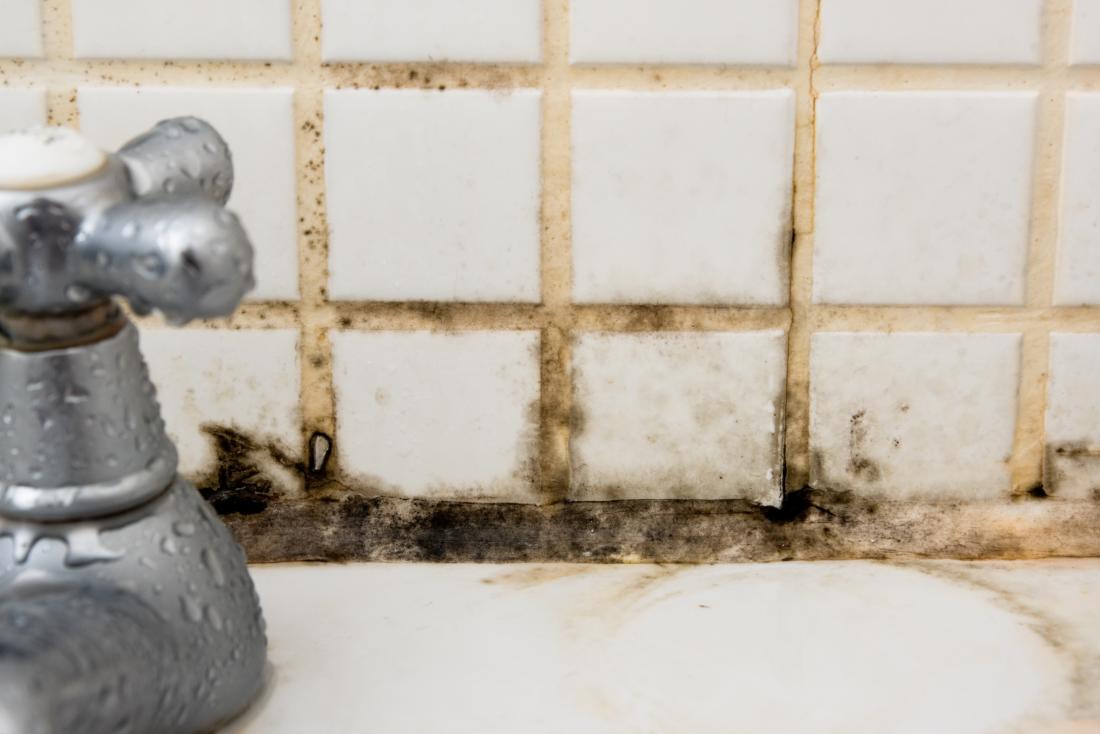









 Can I Use Soap and Water on Mold?
Can I Use Soap and Water on Mold? What Symptoms of
What Symptoms of 
 How Do I Kill Mold Growing All Over My Basement?
How Do I Kill Mold Growing All Over My Basement? Do Bugs Eat Mold?
Do Bugs Eat Mold?
 The other way to prevent mold growth is to take care of your home microbiome. As stated above – bacteria, microbes, and critters all compete for space and food, so the more microbes you have the less mold may be a problem. You can foster a home microbiome by not overcleaning or using harmful cleaners as this will kill the existing microbiome. You can also look into products like
The other way to prevent mold growth is to take care of your home microbiome. As stated above – bacteria, microbes, and critters all compete for space and food, so the more microbes you have the less mold may be a problem. You can foster a home microbiome by not overcleaning or using harmful cleaners as this will kill the existing microbiome. You can also look into products like 
 Using Bleach To Clean Mold
Using Bleach To Clean Mold Why Is Bleach Bad For Cleaning Mold?
Why Is Bleach Bad For Cleaning Mold?

 1. Eat a Healthy Diet
1. Eat a Healthy Diet 2. Take Probiotics
2. Take Probiotics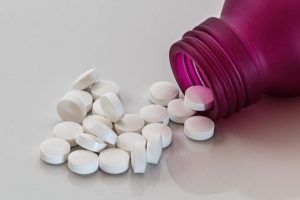 3. Take Pathogen-Killing Medicine Only When Absolutely Required
3. Take Pathogen-Killing Medicine Only When Absolutely Required
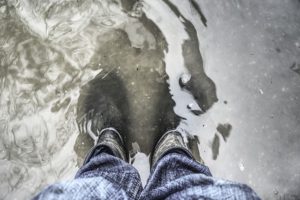 How Long Does It Take Mold To Grow In A Flooded Home?
How Long Does It Take Mold To Grow In A Flooded Home? Does Water Damage Always Cause Mold Growth?
Does Water Damage Always Cause Mold Growth? Can Mold Grow After A Leak Is Fixed?
Can Mold Grow After A Leak Is Fixed?
 CONDENSATION CAUSES MOLD
CONDENSATION CAUSES MOLD FLOODING CAUSES MOLD
FLOODING CAUSES MOLD
 WHAT MAKES YOUR HOME BIOME UNHEALTHY?
WHAT MAKES YOUR HOME BIOME UNHEALTHY?
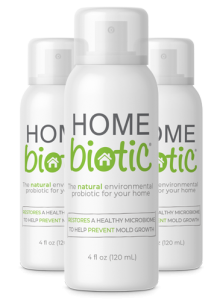


 MOLD & HOMEBIOTIC
MOLD & HOMEBIOTIC